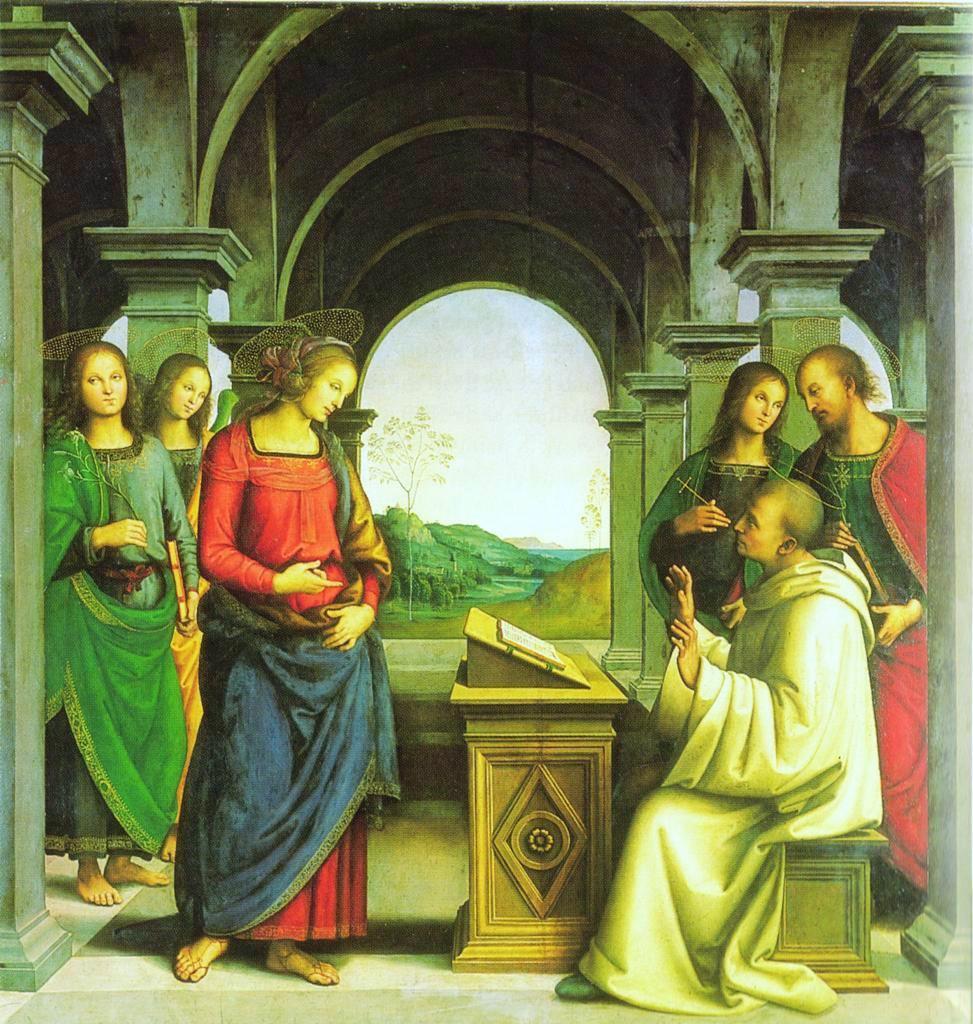- The Virgin appearing to St. Bernard
Infobox Painting

title=The Virgin appearing to St. Bernard
artist=Pietro Perugino
year=c. 1490-1494
type=Oil on wood
height=173
width=170
height_inch=68.1
width_inch =66.9
city=Munich
museum=Alte Pinakothek "The Virgin appearing to St. Bernard" is a painting by the Italian artist
Pietro Perugino , the most outstandingquattrocento painter of theUmbrian school that was based inPerugia . The panel was executed as analtarpiece for the church ofSanta Maria Maddalena dei Pazzi inFlorence .Walther & Suckale, p. 111.] It was later acquired in 1829/30 for KingLudwig I of Bavaria from the Capponi in Florence, and eventually made it to theAlte Pinakothek inMunich . [cite web | url = http://www.pinakothek.de/alte-pinakothek/sammlung/rundgang/rundgang_inc_en.php?inc=bild&which=9643 | title = The Vision of St. Bernhard | publisher =Alte Pinakothek | author = | date = | accessdate = 2008-02-16] The work has been called "one of the high points ofEurope an painting in the late15th century ."The painting shows
Bernardino of Siena , deep in his studies, being interrupted by a fully corporeal vision of the Virgin Mary, who appears to him in the clear light of day. Foursaint s surround them. There is a seemingly effortless, perfect symmetry about the composition, yet there is nothing static or artificial about it in any way.Gombrich, p. 315.] The position of the Virgin and St. Bernard'sprie-dieu are both slightly off balance, but not enough to ruin the serene harmony of the picture. The faces of the various figures contribute to this quiet beauty, without showing much individualism or realism. Likewise, the colours are bright and radiant, without being flashy.As a highly successful painter, Perugino had a large staff of apprentices. Perugino, whose nickname characterizes him as from
Perugia , the chief city ofUmbria , had a background from both the Umbrian and Florentine schools of painting; while the Umbrian influence can be seen in the landscape in the background, his Florentine schooling is expressed in the classicising architectural structures seen in perspective in the manner ofPiero della Francesca : "In Perugino's hands the austere early classicism of Piero had become a style of détente, seeking easier naturalness and harmony in quiet, which too often verged on inertia," Sidney Freedberg remarked. [Freedberg, "Painting in Italy 1500-1600", 3rd edition, (Penguin Books) 1993:50.]Perugino's greatest claim to fame is perhaps that he had as his apprentice the
High Renaissance masterRaphael . Yet Raphael—still only eleven years old at the completion of the painting —probably took no part in "St. Bernard", in fact it is unclear whether he had even started his apprenticeship with Perugino at the time. [Gould, p. 207.]References
ources
*Gombrich, E.H., "The Story of Art", 16th ed. (London & New York, 1995), ISBN 071483355X
*Gould, Cecil, "The Sixteenth Century Italian Schools", National Gallery Catalogues, (London 1975), ISBN 0947645225
*Walther, Ingo F. & Robert Suckale (eds.), "Masterpieces Of Western Art: A History Of Art In 900 Individual Studies ", (Cologne, 2002) ISBN 3822818259
Wikimedia Foundation. 2010.
